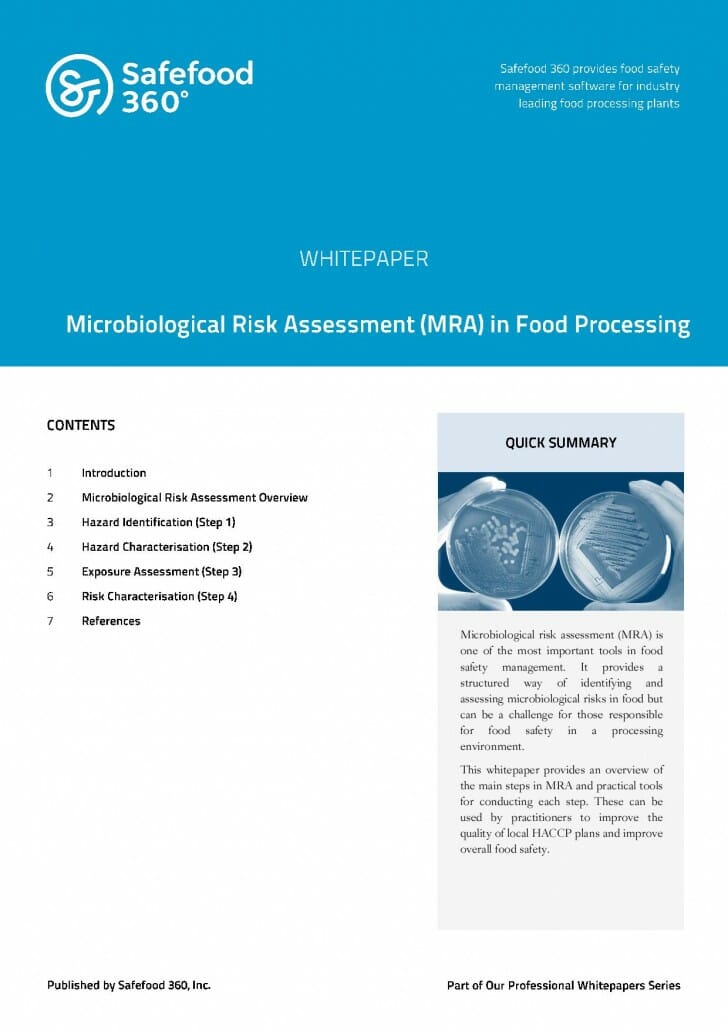
Microbiological risk assessment (MRA) is one of the most important tools in food safety management. It provides…Read preview
Microbiological risk assessment (MRA) is one of the most important tools in food safety management. It provides a structured way of identifying and assessing microbiological risks in food but can be a challenge for those responsible for food safety in a processing environment. This whitepaper provides an overview of the main steps in MRA and practical tools for conducting each step. These can be used by practitioners to improve the quality of local HACCP plans and improve overall food safety. Read preview..
Microbiological Risk Assessment (MRA) in Food Processing
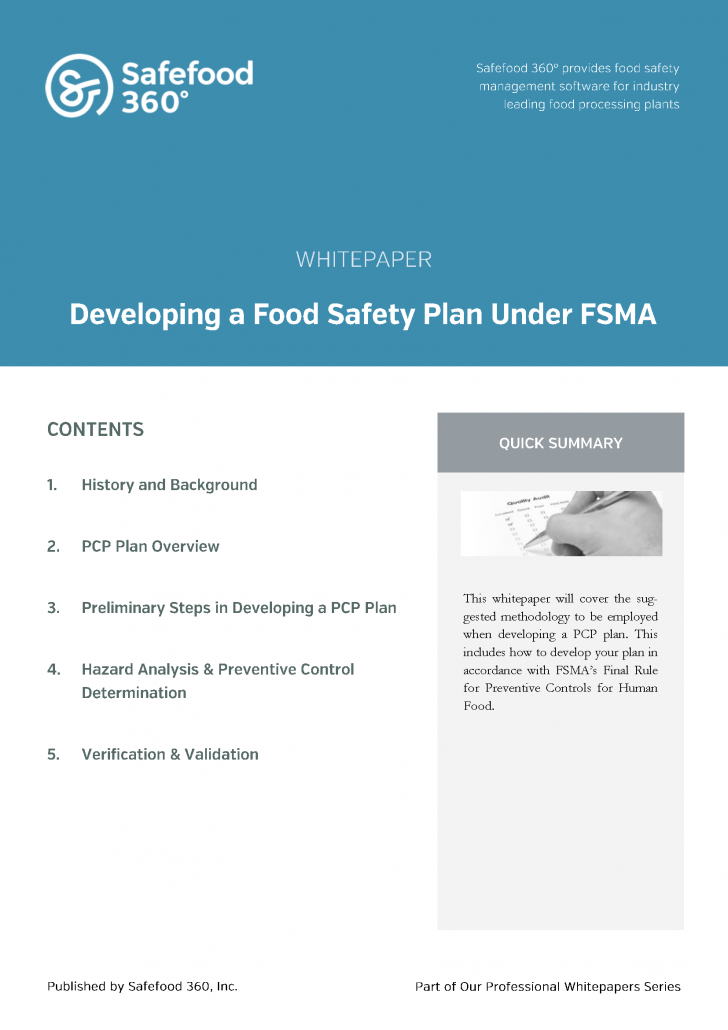
Many companies have been busy putting in place their PCP Plans to meet the requirements of FSMA. The complexity… Read preview
Many companies have been busy putting in place their PCP Plans to meet the requirements of FSMA. The complexity of this legislation is significant with many conditions attached to the plan beyond what we are used to with HACCP. To help in the review or development of the plan we have put together this structured whitepaper guide. Read preview..
Developing a Food Safety Plan Under FSMA
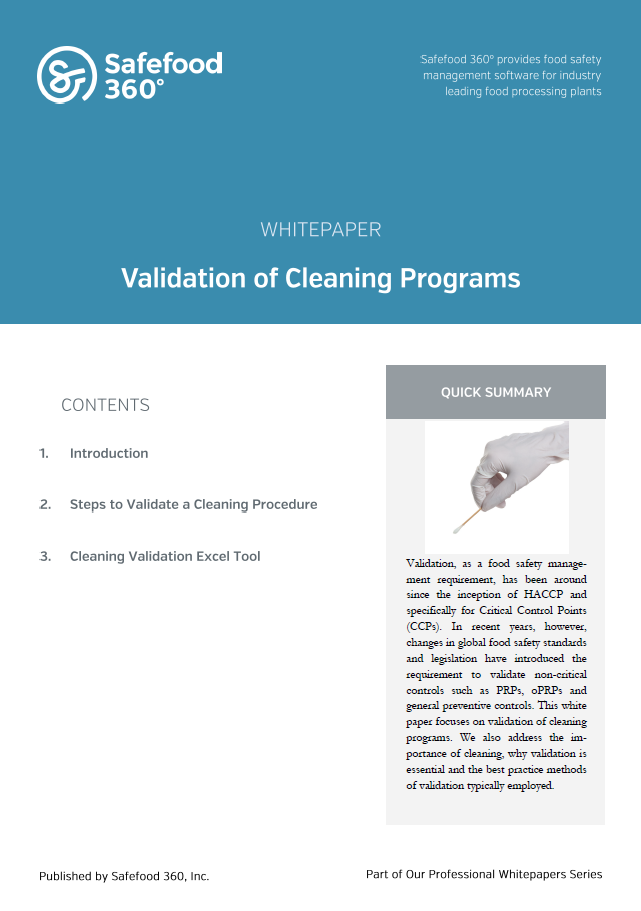
Validation of Cleaning Programs is now a mandatory requirement under most GFSI food safety standards. We’ve compiled everything… Read preview
Validation of Cleaning Programs is now a mandatory requirement under most GFSI food safety standards. We’ve compiled everything you need to know to keep your external auditors more than happy. Read preview..
Validation of Cleaning Programs
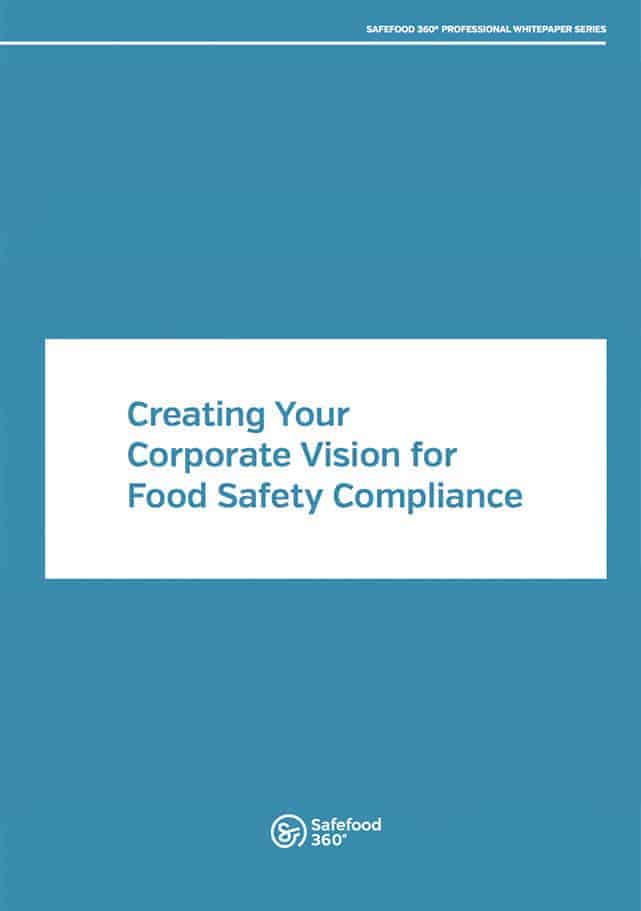
Validation of Cleaning Programs is now a mandatory requirement under most GFSI food safety standards. We’ve compiled everything… Read preview
What is your vision for food safety in your organization? How is the food safety landscape going to look like in the next five to ten years? Do you know how to manage the change that is required to future-proof your business? This high-level strategic publication answers these questions and more. You will learn about current trends and areas of change, you will learn about 5 elements that you should incorporate in your corporate vision for food safety and you will get tangible advice on how to manage the change. Read preview..
Creating Your Corporate Vision for Food Safety Compliance
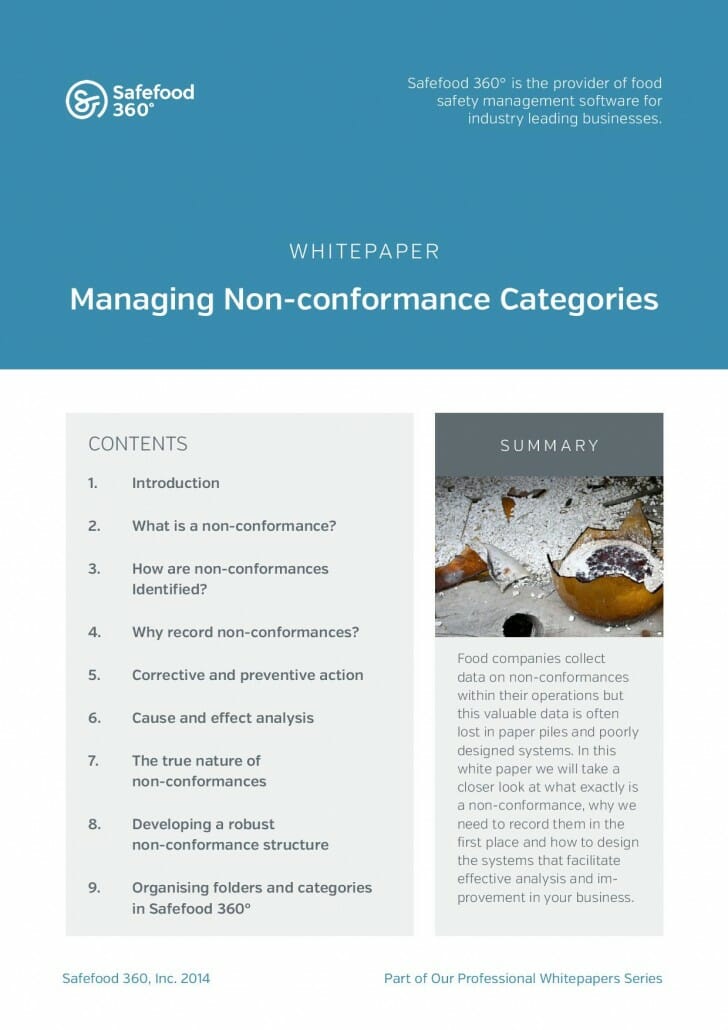
Every day, food companies collect data on non-conformances within their operations but this valuable information can often be lost in… Read preview
Every day, food companies collect data on non-conformances within their operations but this valuable information can often be lost in paper piles and poorly designed systems that have been devised for analysing the data. In this whitepaper we will take a closer look at what exactly is a non-conformance, why we need to record them in the first place and how to design the systems that will facilitate effective analysis and improvement in your business. Finally, we will provide tips on how to set up your non-conformance categories in Safefood 360º. Read preview..
Managing Non-conformance Categories
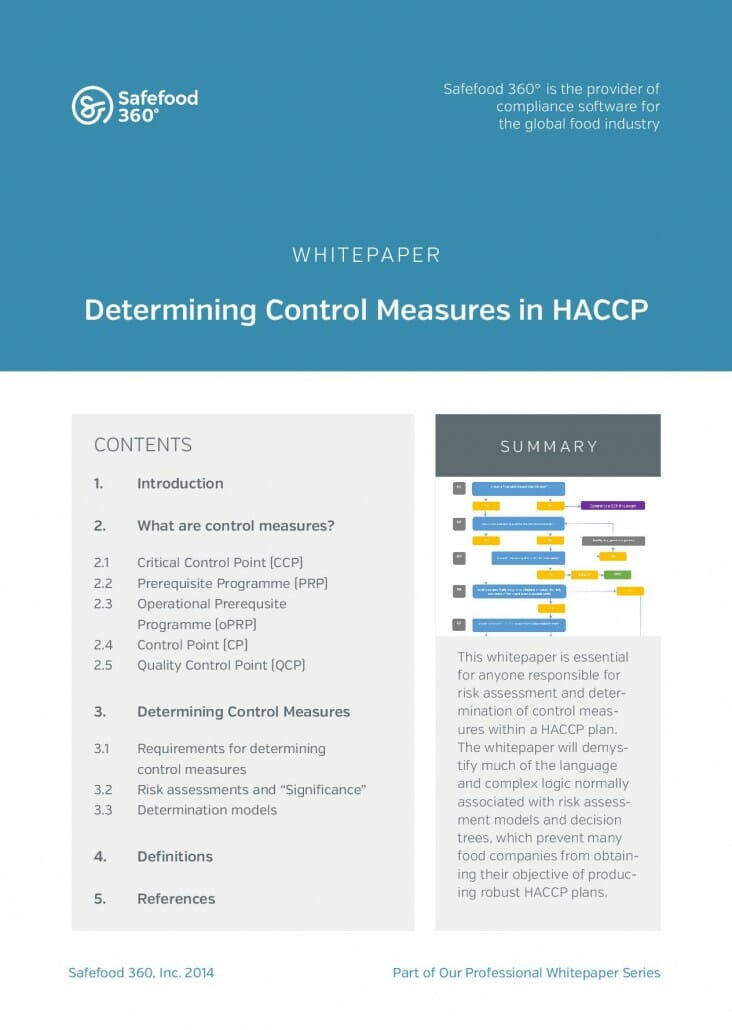
This white paper is essential for any food safety manager who is responsible for risk assessment and determination of control… Read preview
This white paper is essential for any food safety manager who is responsible for risk assessment and determination of control measures within a HACCP plan. The white paper will demystify much of the language and complex logic normally associated with risk assessment models and decision trees, which prevent many food companies from obtaining their objective of producing robust HACCP plans. Read preview..
Determining control measures in HACCP
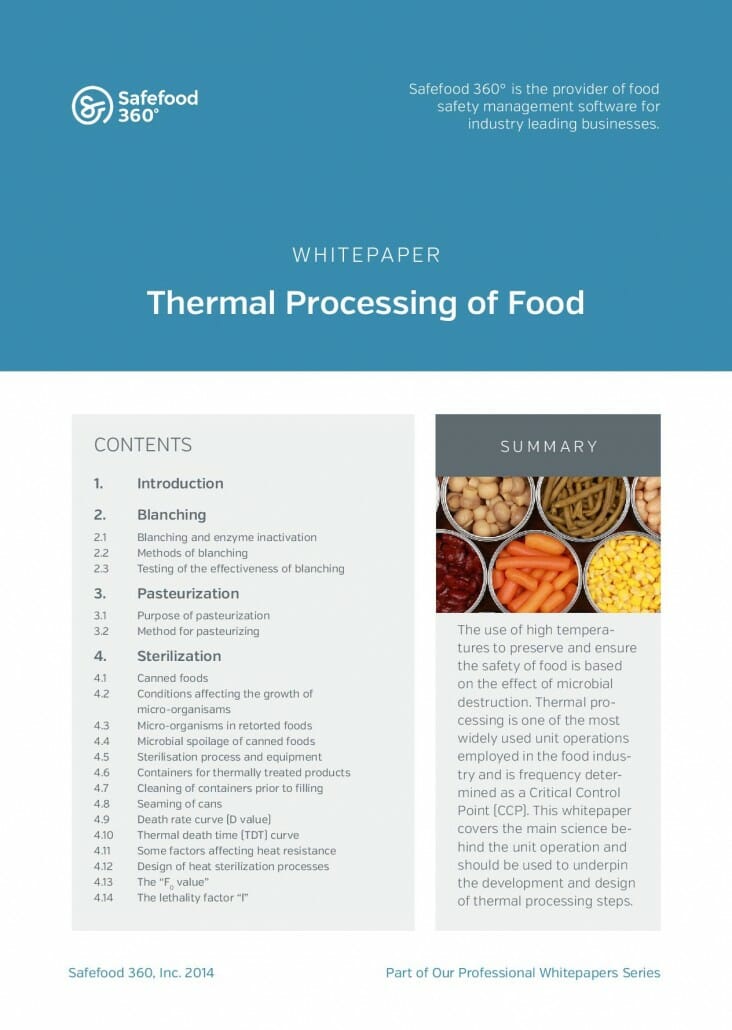
The use of high temperatures to preserve and ensure the safety of food is based on the effect of microbial destruction. Thermal processing is… Read preview
The use of high temperatures to preserve and ensure the safety of food is based on the effect of microbial destruction. Thermal processing is one of the most widely used unit operations employed in the food industry and is frequently determined as a Critical Control Point (CCP). An understanding of the principles behind thermal processing is vital for same food production where it is employed. This whitepaper covers the main science behind the unit operation and should be used to underpin the development and design of thermal processing steps. Read preview..
Thermal Processing of Food
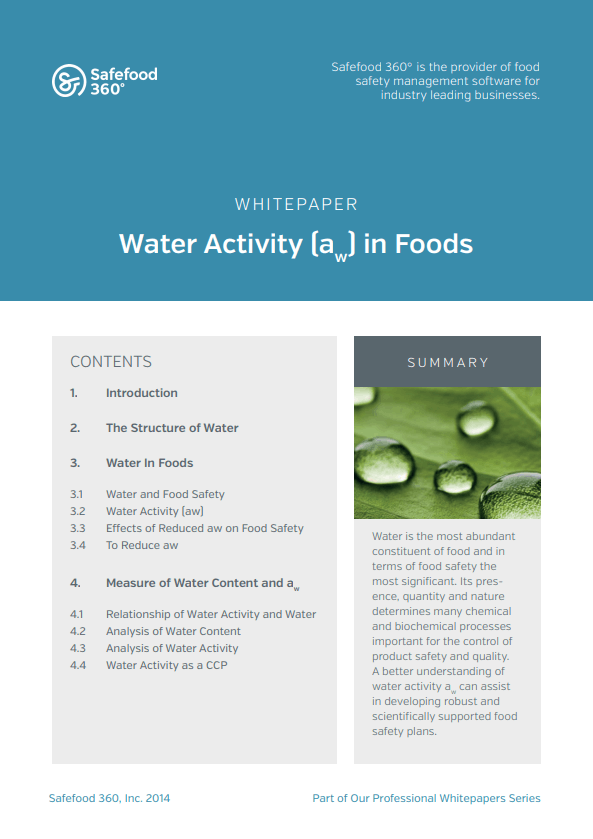
Water is the most abundant constituent of food and in terms of food safety the most significant. Its presence, quantity and… Read preview
Water is the most abundant constituent of food and in terms of food safety the most significant. Its presence, quantity and nature determines many chemical and biochemical processes important for the control of product safety and quality. In many HACCP plans, water is frequently referred to as an intrinsic parameter required in product safety and while we most of us understand its importance we often fail to understand the reasons why. This whitepaper will give you a better understanding of water and in particular water activity aw, and it can assist you in developing robust and scientifically supported food safety plans. Read preview..
Water Activity in Foods
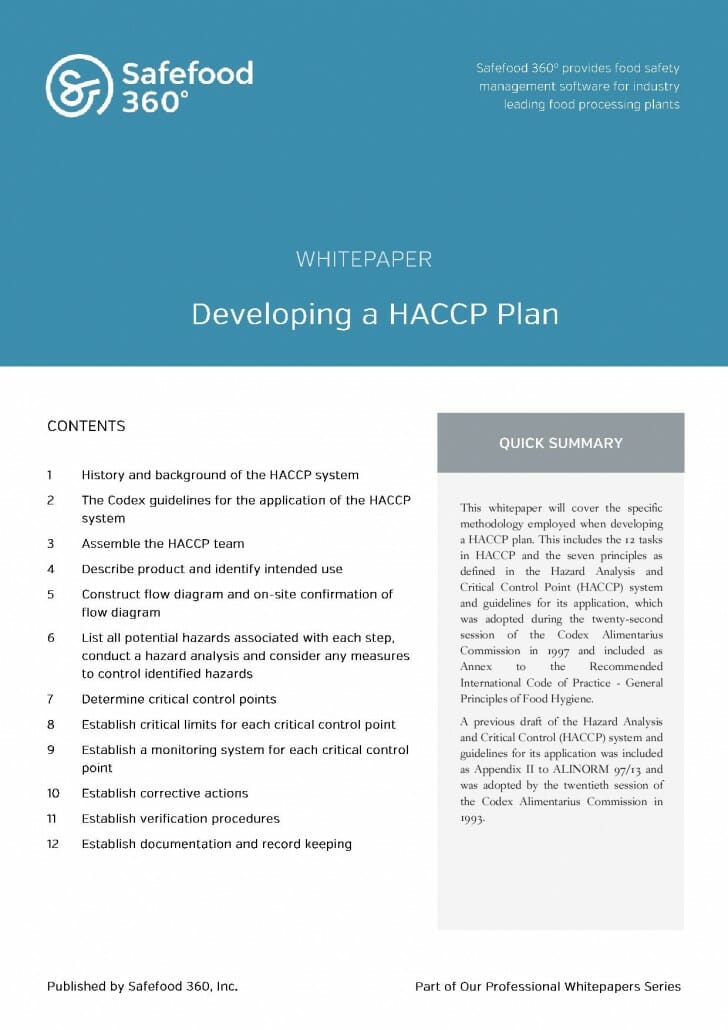
HACCP is the most widely used risk based tool for developing food safety management programs. Its principles require… Read preview
Developing a HACCP Plan
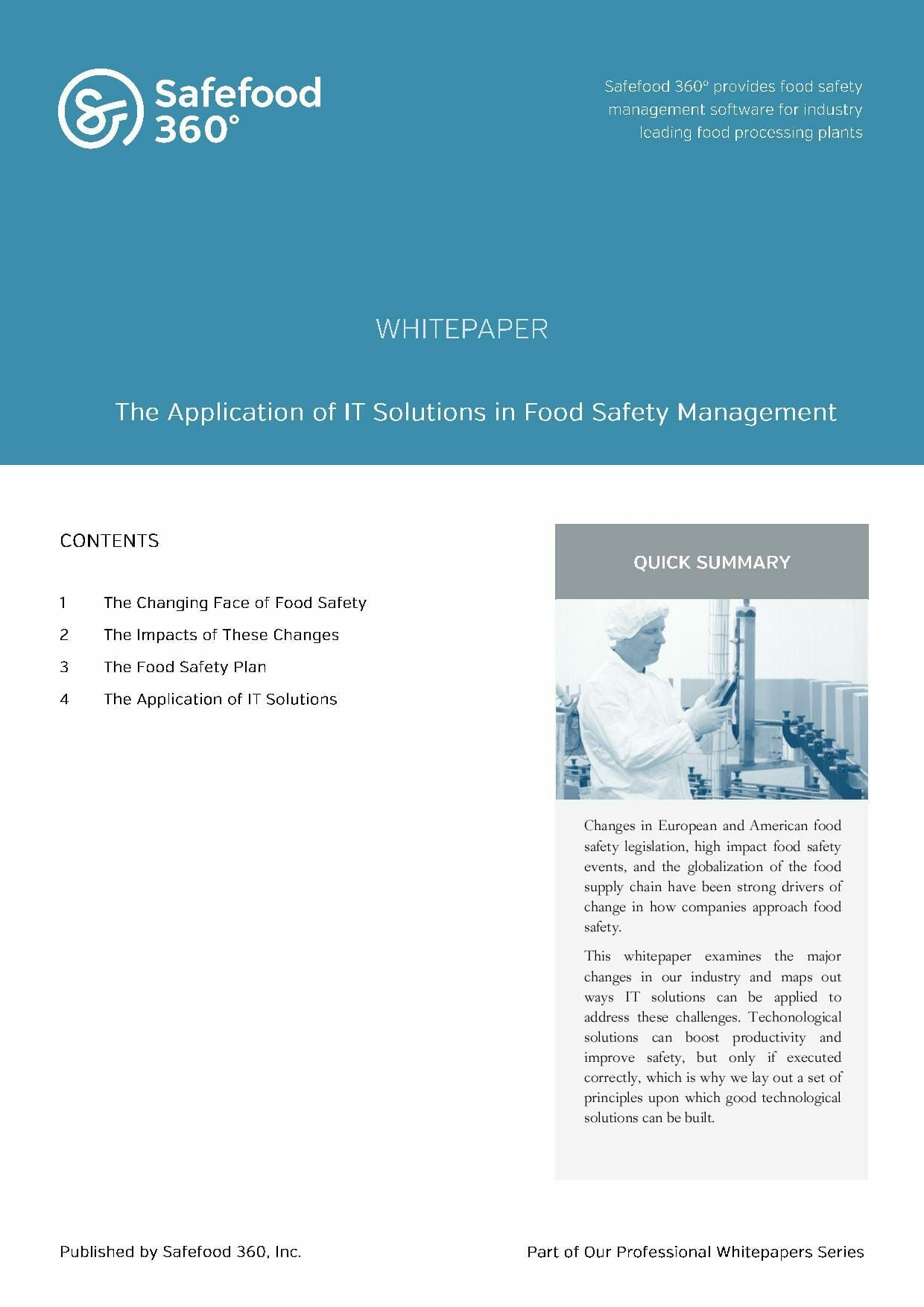
Changes in European and American food safety legislation, high impact food safety events, and the globalization of the food supply… Read preview
The Application of IT Solutions in Food Safety Management
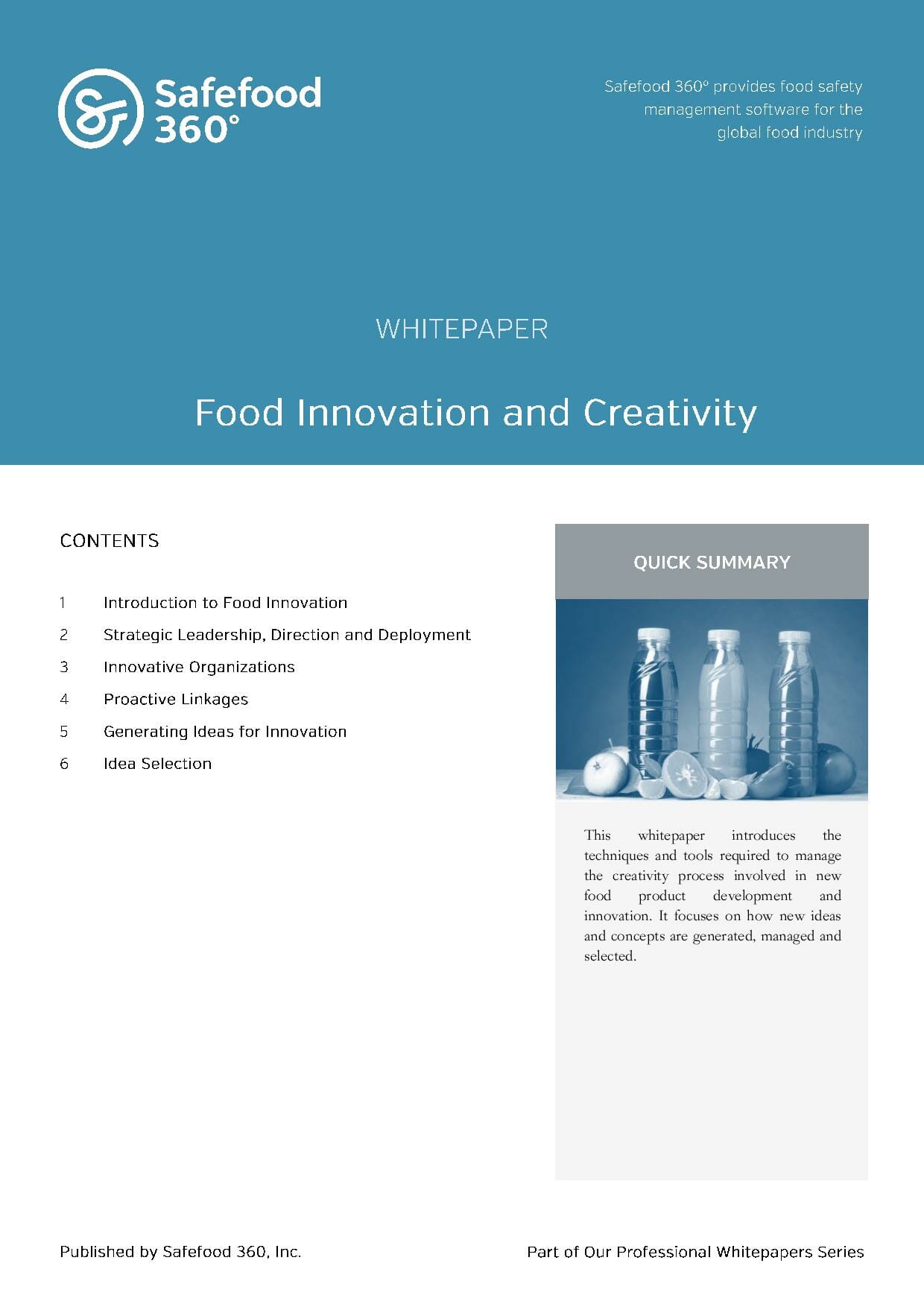
This whitepaper introduces the techniques and tools required to manage the creativity process involved in new food product development and… Read preview
Food Innovation and Creativity
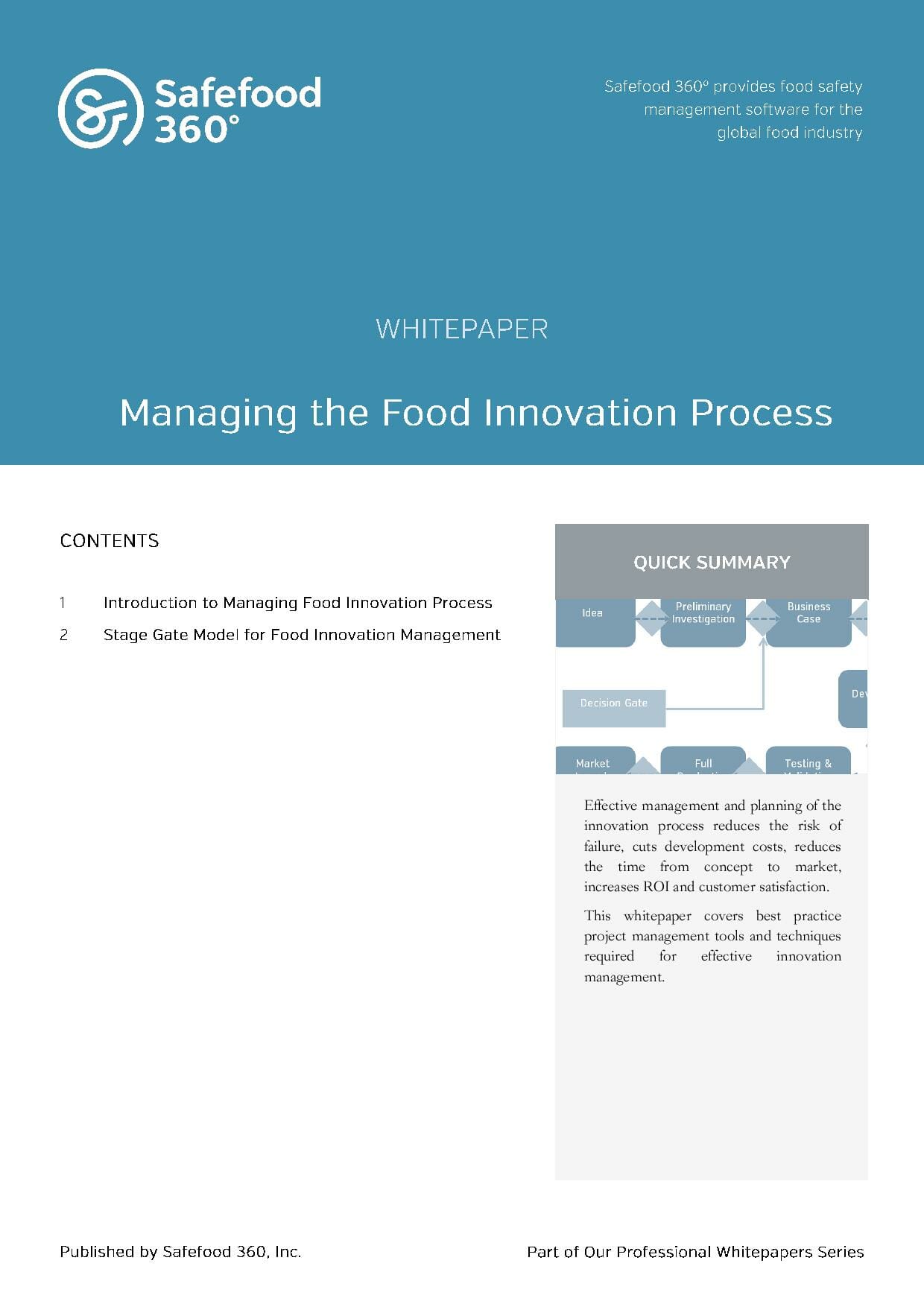
Effective management and planning of the innovation process reduces the risk of failure, cuts development costs, reduces… Read preview
Managing Food Innovation
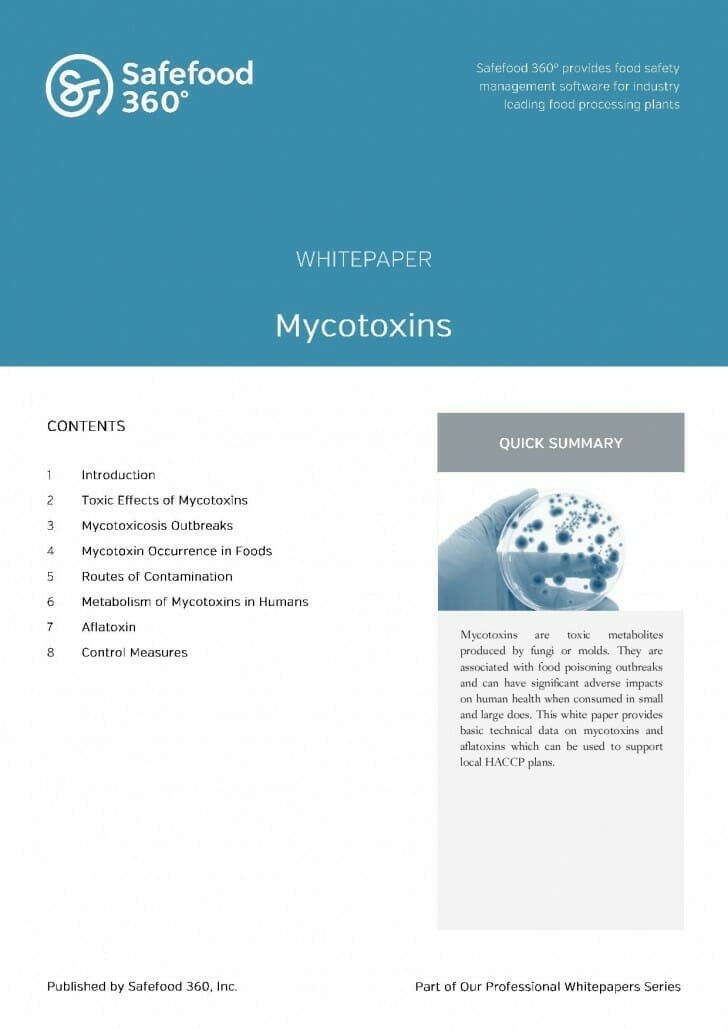
Mycotoxins are toxic metabolites produced by fungi or molds. They are associated with food poisoning outbreaks and can have … Read preview
Short Introduction to Mycotoxins
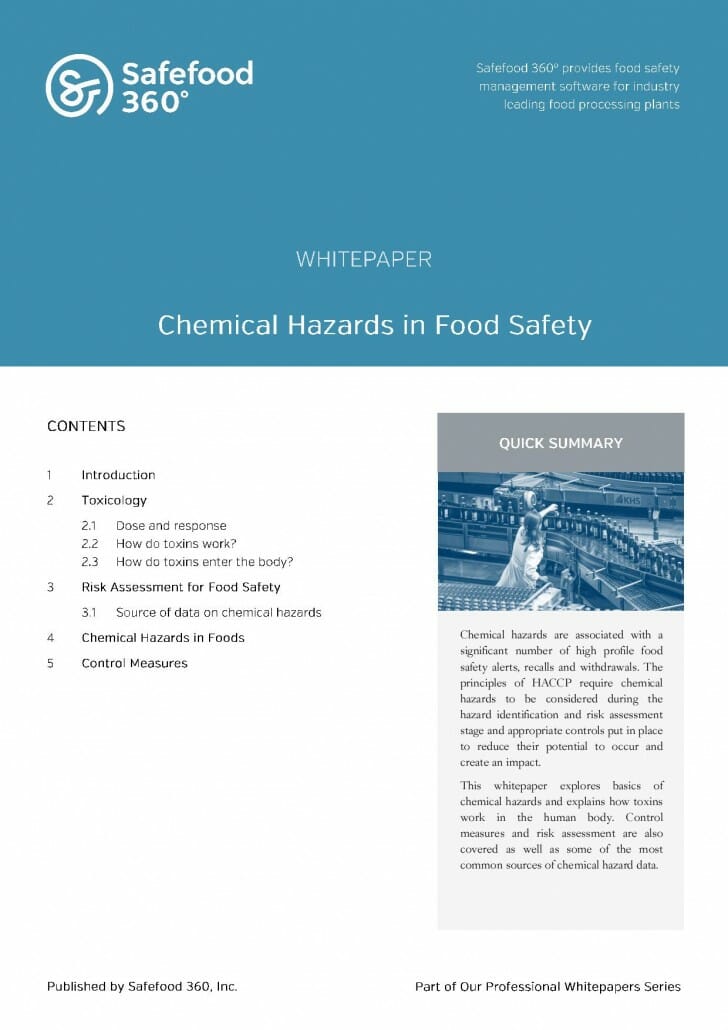
Chemical hazards are associated with a significant number of high profile food safety alerts, recalls and withdrawals. The principles… Read preview
Chemical Hazards in Food Safety

Auditing has emerged as one of the most utilized tools for ensuring food safety systems and programs are both compliant and… Read preview
Food Safety Auditing – Principles and Practice
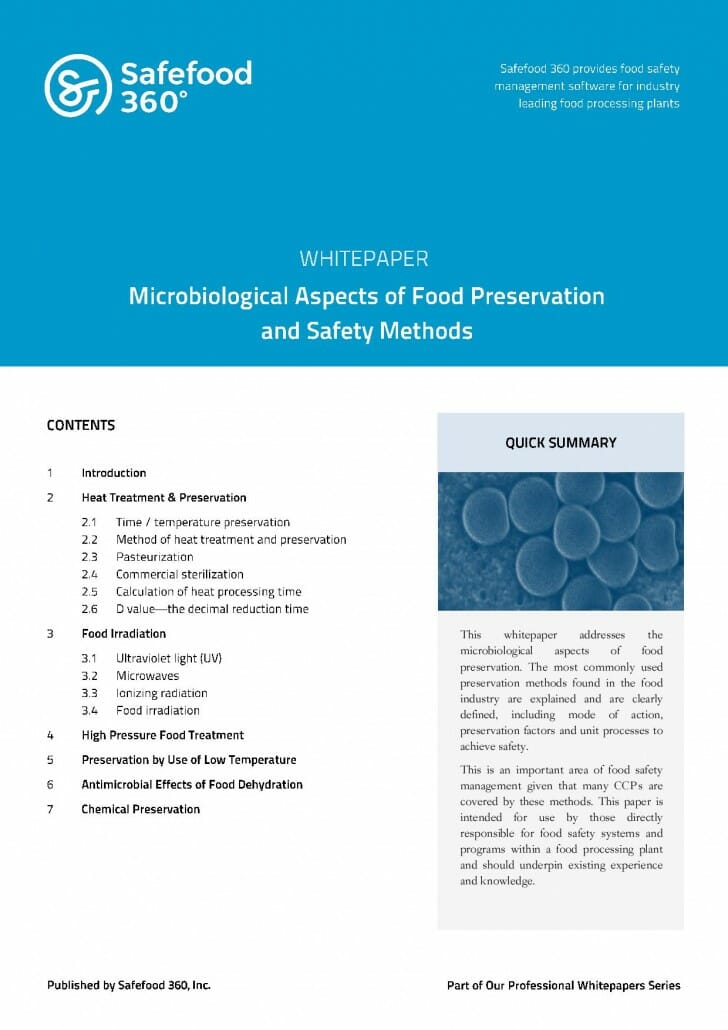
Microbiological hazards are one of the most significant causes of food poisoning. An understanding of these… Read preview
Microbiological Aspects of Food Preservation and Safety Methods
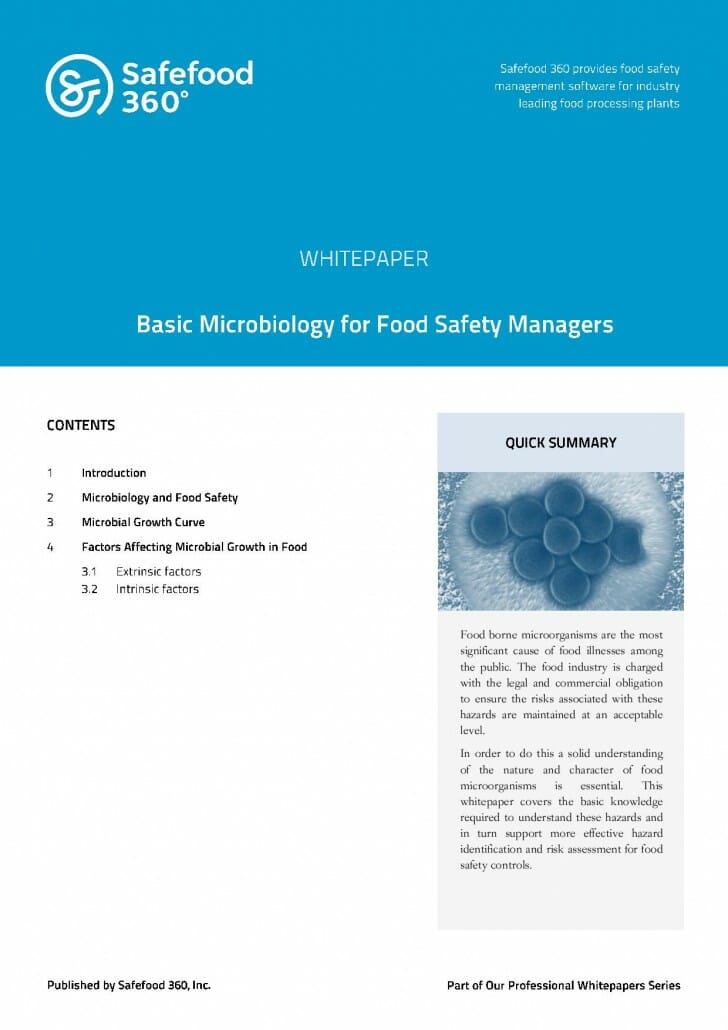
Food borne micro-organisms are the most significant cause of food illnesses among the public. The food industry… Read preview
Basic Microbiology for Food Safety Managers
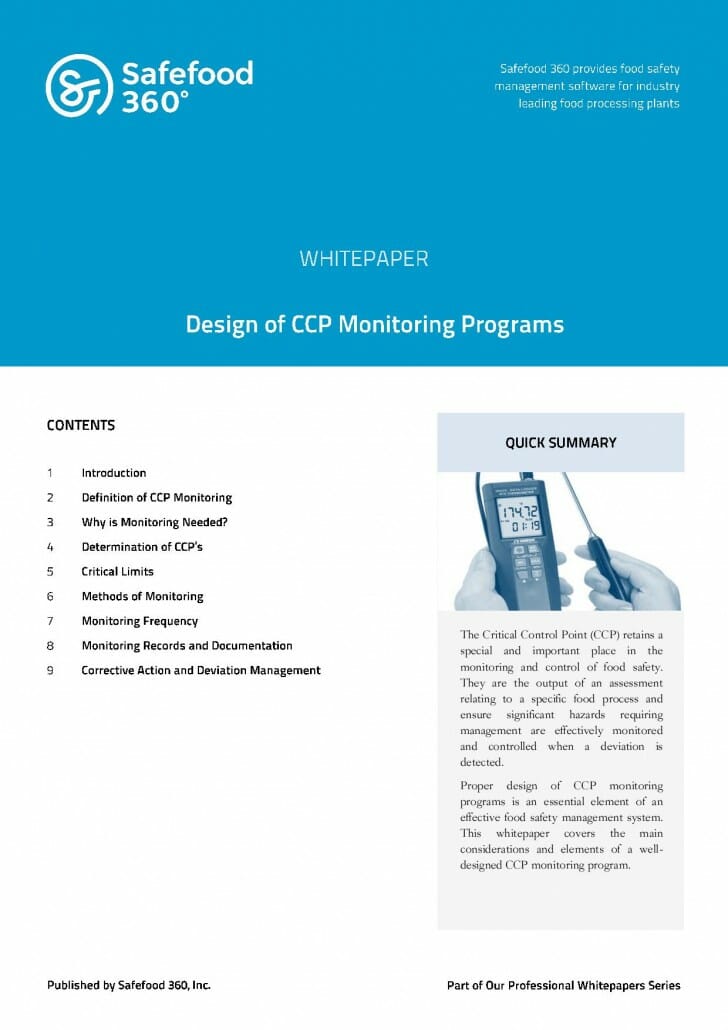
The Critical Control Point (CCP) retains a special and important place in the monitoring and control of food safety. They are… Read preview
Design of CCP Monitoring Programs
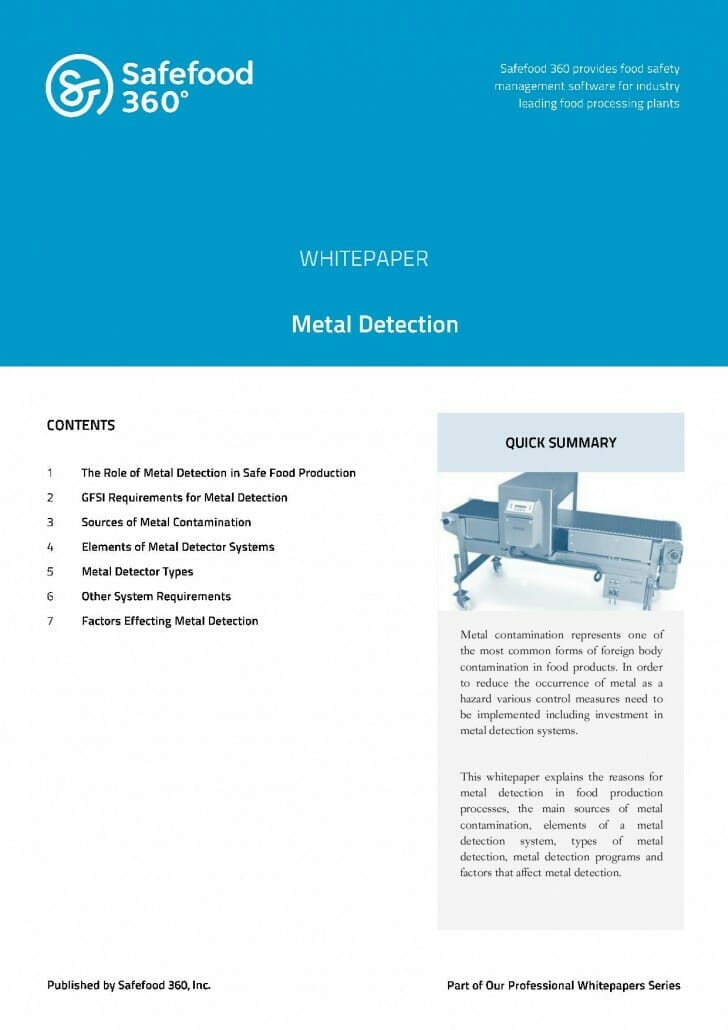
Metal contamination represents one of the most common forms of foreign body contamination in food products. In order… Read preview
Metal Detection

Foreign body hazards represent one of the most significant risks associated with the production and distribution of food products. Among… Read preview
Glass & Hard Plastic Control
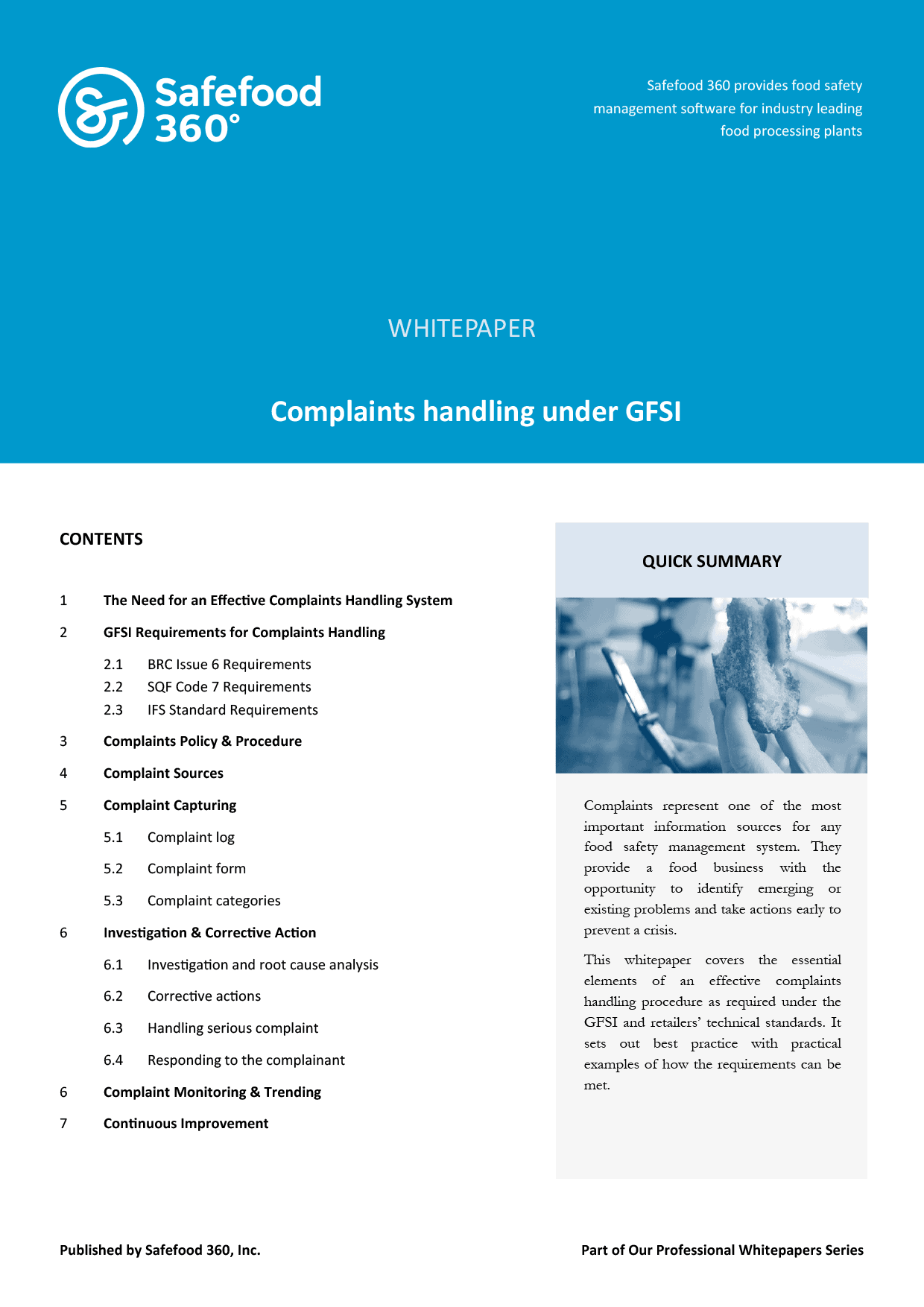
Complaints represent one of the most important information sources for any food safety management system. They… Read preview
Complaints Handling under GFSI
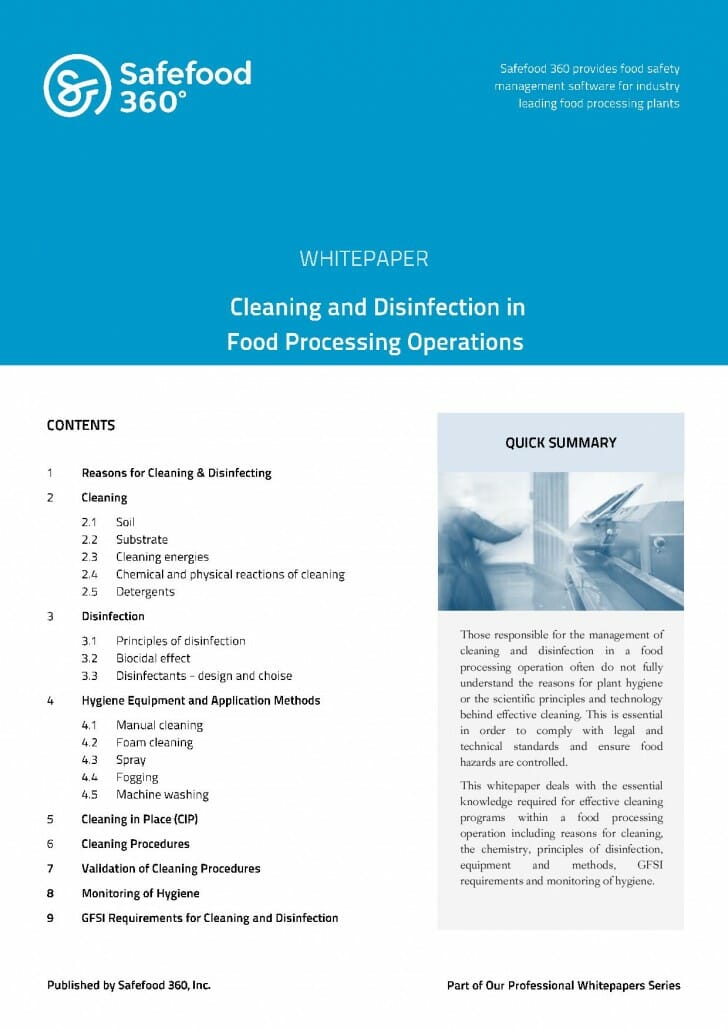
Those responsible for the management of cleaning and disinfection in a food processing operation often do not fully… Read preview